The Alaskan Malamute Dog Breed: Understanding This Breed’s Special Charm and Appeal
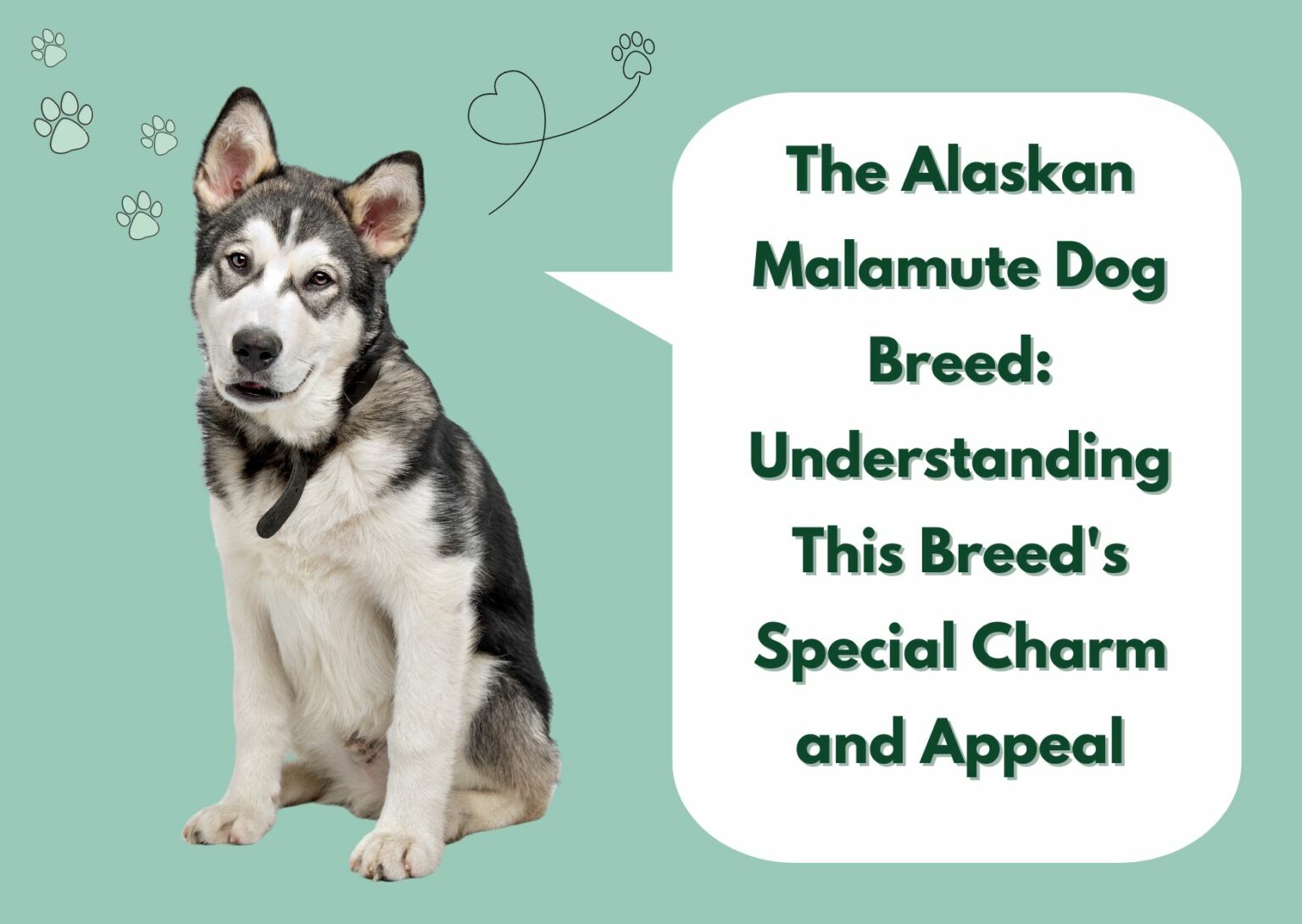
Sharing is Caring!
Introduction
The Alaskan Malamute dog breed, known for their majestic appearance and incredible strength, is a captivating breed that has captured the hearts of many dog enthusiasts. With their rich history and distinctive characteristics, understanding this breed is essential for anyone considering welcoming one into their home. In this article, we will delve into the fascinating world of theirs, exploring Alaskan Malamute information as origins, unique traits, and why it’s crucial to comprehend their specific needs.
The Origins of the Alaskan Malamute

The Alaskan Malamute is a breed with a rich history and a strong connection to the indigenous people of Alaska. Understanding the origins and historical significance of this remarkable breed helps to appreciate its unique charm and appeal.
Origins of the Alaskan Malamute
The Alaskan Malamute’s roots can be traced back thousands of years. They are believed to be one of the oldest Arctic sled dog breeds, originating from the native Inuit tribes in Alaska. These tribes relied on sled dogs for various tasks, including transportation, hunting, and companionship.
The breed’s ancestry can be linked to the Mahlemut Eskimos, who inhabited the Kotzebue Sound region of western Alaska. These indigenous people bred the dogs selectively, emphasizing traits such as strength, endurance, and the ability to thrive in harsh Arctic conditions.
Historical Significance and Role in Sled Pulling
The Alaskan Malamute played a vital role in the survival and sustenance of the native Alaskan tribes. They were used for sled pulling, carrying heavy loads, and transporting supplies across vast snowy landscapes. Their remarkable strength, endurance, and work ethic made them invaluable companions in the challenging Arctic environment.
During the Alaskan Gold Rush in the late 19th century, the breed gained further recognition for its sled-pulling capabilities. Miners relied on Alaskan Malamute to haul equipment and provisions through the treacherous terrain, contributing to the development of the region.
The Alaskan Malamute’s exceptional sledding abilities were also put to use during World War II. The United States Army utilized these dogs for search and rescue missions in the Arctic regions, showcasing their intelligence, loyalty, and adaptability. The contributions of the Alaskan Malamute to the history and culture of Alaska are widely acknowledged and celebrated by organizations such as the American Kennel Club.
Despite the introduction of modern transportation methods, the Alaskan Malamute’s legacy in sled dog sports and pulling endures. They continue to participate in sled dog races, such as the renowned Iditarod Trail Sled Dog Race, further highlighting Alaskan Malamute dog history and the bond between humans and these remarkable canines.
Characteristics of the Malamute
The Alaskan Malamute characteristics are known for their striking and powerful. Understanding their size, weight, and overall appearance, as well as their distinctive coat, including color variations and insulating properties, helps to appreciate their unique charm and appeal.
Physical Characteristics

Alaskan Malamute traits
The Alaskan Malamute breed is one of the sturdy and large breeds with a strong and well-muscled body. They are considered one of the largest arctic dogs.
Size: Adult males typically stand between 24 and 26 inches (61-66 cm) at the shoulder, while females generally range from 22 to 24 inches (56-61 cm).
Weight: Adult males typically weigh between 75 to 85 pounds (34-39 kg), while females weigh slightly less, ranging from 65 to 75 pounds (29-34 kg).
Life expectancy: The average life expectancy of an Alaskan Malamute breed is typically between 10 to 14 years. However, it’s important to note that individual dogs may vary, and factors such as genetics, overall health, diet, exercise, and veterinary care can influence their lifespan. Providing proper nutrition, regular exercise, routine veterinary check-ups, and a loving and stimulating environment can help maximize the lifespan of an Alaskan Malamute and ensure they lead a healthy and happy life.
Overall Appearance: The Alaskan Malamute has a powerful and balanced body structure. They have a broad heads with erect triangular, pointed ears, and a well-defined stop. Their eyes are almond-shaped and express an alert and friendly gaze. The breed features a strong neck, a deep chest, and a compact, straight back. The tail is plumed and carried over the back.
Double Coat, Color Variations, and Insulating Properties
The Alaskan Malamute possesses a luxurious double and thick coat, which provides excellent insulation and protection in cold and hot climates both.
Outer Coat: The outer coat of the Alaskan Malamute is coarse, dense, and weather-resistant. It helps shield them from snow, ice, and moisture. The outer coat stands off the body and provides a degree of protection against harsh weather elements.
Undercoat: Beneath the outer coat, the Alaskan Malamute has a dense and woolly undercoat. The undercoat serves as insulation, keeping the dog warm in cold temperatures. It sheds seasonally, typically in spring and fall.
Color Variations: Alaskan Malamute dogs come in various color combinations, including shades of gray, black, and sable. They may also have white markings or patterns on the face, chest, and legs. Some Malamutes have a distinct mask-like marking on their face, which adds to their captivating appearance.
The Alaskan Malamute’s physical characteristics, including their size, weight, and double coat, contribute to their impressive presence and make them very large breed dogs well-suited for their ancestral role as sled dogs in harsh Arctic environments. Their striking appearance and well-adapted coat further enhance their allure and popularity as a cherished breed among dog enthusiasts.
Temperament and Personality
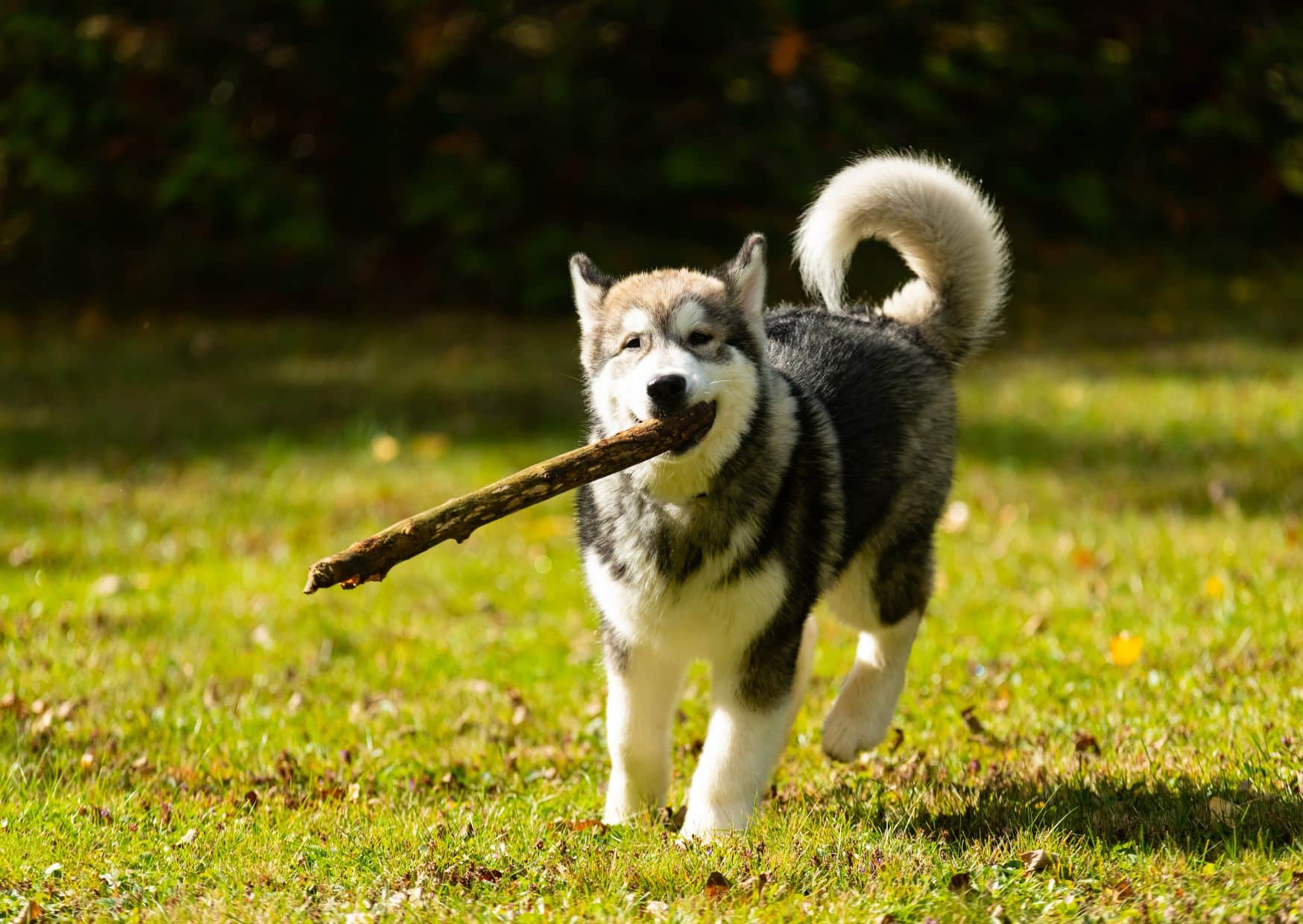
The Alaskan Malamute temperament and personality sets them apart from other breeds as a unique and captivating breed. Exploring their temperament traits, which include their friendly and affectionate nature, as well as their pack-oriented behavior, provides insight into their special charm and appeal.
Friendly and Affectionate Nature: Alaskan Malamute dog breed is known for their friendly and sociable disposition. They generally exhibit a warm and welcoming attitude towards both familiar faces and strangers alike. This friendly nature makes them wonderful companions and family pets. They often form strong bonds with their human family members, showing loyalty and devotion.
Pack-Oriented Behavior: Malamute dogs have a strong sense of pack mentality. Historically, they worked alongside their human counterparts in the challenging Arctic environment, relying on teamwork and cooperation. This pack-oriented behavior translates into their interactions with their family. They thrive in environments where they feel like part of a cohesive pack and enjoy being involved in family activities. They often exhibit a natural instinct to protect and care for their loved ones.
Playful and Energetic: Alaskan Malamute personality is renowned for its playful and energetic nature. They possess a youthful exuberance and love engaging in activities that challenge their physical and mental capabilities. They enjoy games, exercise, and outdoor adventures, making them an ideal companion for active individuals or families who can provide them with the necessary outlets for their energy.
Independent Thinkers: While Alaskan Malamute dogs are known for their intelligence, they also have an independent streak. They may demonstrate a level of stubbornness and may not always readily comply with commands. This characteristic requires patient and consistent training, utilizing positive reinforcement methods. With the right approach, they can be taught and guided effectively.
Howling and Vocalization: Alaskan Malamutes are known for their distinctive howling and vocalization. They may communicate through various vocal sounds, including howls, barks, and “talking.” This characteristic adds to their charm and can create an entertaining and interactive atmosphere.
Understanding the temperament and personality traits of the Alaskan Malamute enables individuals to provide them with the appropriate care, training, and socialization they need to thrive. Their friendly and affectionate nature, pack-oriented behavior, playfulness, and unique vocalizations contribute to their enduring charm and appeal as a beloved breed.
Training and Socialization

Training an Alaskan Malamute requires patience, consistency, and an understanding of their unique characteristics. Providing tips and guidance on training, as well as emphasizing the importance of early socialization and obedience training, helps ensure a well-behaved and happy Alaskan Malamute.
Importance of Early Socialization and Obedience Training
Early socialization is vital for Alaskan Malamutes to grow into well-rounded and confident dogs. Expose them to various people, animals, sounds, and environments to help them develop positive associations and adaptability. This early socialization lays the foundation for good Alaskan Malamute behavior and reduces the likelihood of fear or aggression issues later in life.
Obedience training is equally important for an Alaskan Malamute dog. Teaching basic commands such as sit, stay, come, and leash manners not only improves their behavior but also ensures their safety and the safety of others. A well-trained Alaskan Malamute is more likely to be a well-behaved and enjoyable companion.
Tips for Training an Alaskan Malamute
Start Early: Begin training your Alaskan Malamute as early as possible. Puppies are more receptive to learning and establishing good habits at a young age.
Use Positive Reinforcement: Alaskan Malamutes tend to respond best to positive reinforcement training methods, such as rewards, treats, and praise. Reward desired behaviors and ignore or redirect unwanted behaviors.
Be Patient and Consistent: Consistency is key when training dog breeds Malamute. Set clear boundaries and rules, and consistently enforce them. Avoid harsh or punishment-based training methods, as they can damage the trust and relationship with your dog.
Focus on Socialization: Socialization is crucial for Alaskan Malamutes to develop good behavior around other dogs, animals, and people. Expose them to various environments, people, and situations from an early age. This helps prevent shyness, fear, or aggression as they grow older.
Provide Mental Stimulation: They are intelligent and need mental stimulation alongside physical exercise. Engage them in interactive games, puzzle toys, and obedience training to keep their minds sharp and prevent boredom-related behavior issues.
Seek Professional Help if Needed: If you encounter difficulties in training your Alaskan Malamute or need guidance, consider consulting a professional dog trainer or behaviorist who specializes in working with this breed.
Remember, training should be a positive and rewarding experience for both you and your Malamute dog. Building a strong bond based on trust, respect, and clear communication sets the stage for a lifelong partnership filled with love and understanding.
Common Health Issues
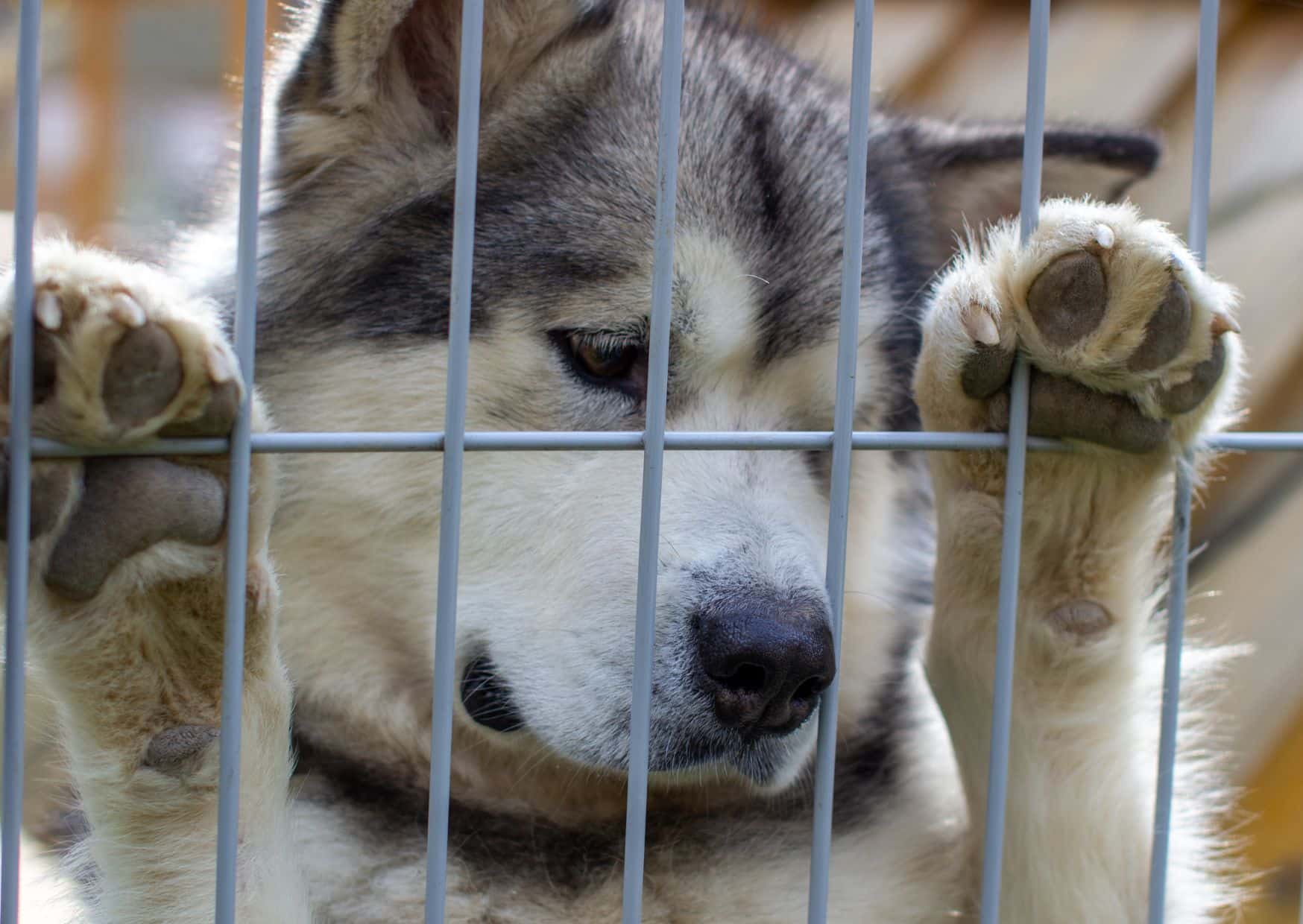
Alaskan Malamute breed is generally healthy and robust However, like any other breed, they are prone to certain health issues and may have genetic predispositions. Outlining common health issues and genetic predispositions, as well as providing information on preventive measures and regular veterinary care, helps ensure their well-being and longevity of theirs.
Common Health Issues and Genetic Predispositions
Hip Dysplasia: This is a common condition in larger dog breeds, including Malamute dogs. It occurs when the hip joint doesn’t develop properly, leading to discomfort, pain, and eventually arthritis. Regular screening and evaluation by a veterinarian can help detect and manage hip dysplasia.
Progressive Retinal Atrophy (PRA): PRA is an inherited eye disease that affects the retina, leading to gradual vision loss and, in severe cases, blindness. Responsible breeders conduct eye examinations and genetic testing to minimize the risk of PRA in their breeding lines.
Hypothyroidism: Alaskan Malamute dog breed can be prone to hypothyroidism, a condition characterized by an underactive thyroid gland. Symptoms may include weight gain, lethargy, hair loss, and skin issues. Regular thyroid function testing and appropriate treatment, if necessary, can help manage this condition effectively.
Gastric Dilatation-Volvulus (GDV): Also known as bloat, GDV is a potentially life-threatening condition that affects deep-chested breeds like Alaskan Malamutes. It involves the stomach twisting, leading to a blockage of blood flow. Immediate veterinary attention is critical if bloat is suspected.
Polyneuropathy: Dog breed Alaskan Malamute can be prone to a hereditary neurological disorder known as polyneuropathy. It affects the nerves and can cause weakness, coordination issues, and difficulty walking. Genetic testing is available to identify carriers and avoid breeding affected dogs.
Preventive Measures and Regular Veterinary Care
Responsible Breeding: Choosing a reputable breeder who performs health screenings and genetic testing on their breeding dogs helps reduce the risk many dogs of inheriting genetic health issues.
Balanced Diet and Exercise: Providing a balanced and nutritious diet, appropriate for the dog’s age and activity level, helps maintain overall health. Regular exercise is important to prevent obesity and keep theirs physically fit.
Regular Veterinary Check-ups: Schedule routine veterinary check-ups to monitor your Alaskan Malamute’s overall health, receive necessary vaccinations, and detect any potential health issues early on. Regular dental care is also essential to prevent periodontal disease.
Parasite Prevention: Protect your Alaskan Malamute from external parasites like fleas, ticks, and internal parasites like heartworms with appropriate preventatives recommended by your veterinarian.
Spaying/Neutering: Consider spaying or neutering your Malamute dog unless you have plans for responsible breeding. This can help prevent certain reproductive health issues and eliminate the risk of certain cancers.
By being proactive in preventive measures, practicing responsible breeding, and providing regular veterinary care, you can significantly contribute to the overall health and well-being of your Alaskan Malamute dog breed and potentially minimize the impact of any genetic predispositions. Remember, early detection and prompt treatment are crucial for managing any health issues that may arise.
Grooming and Coat Care
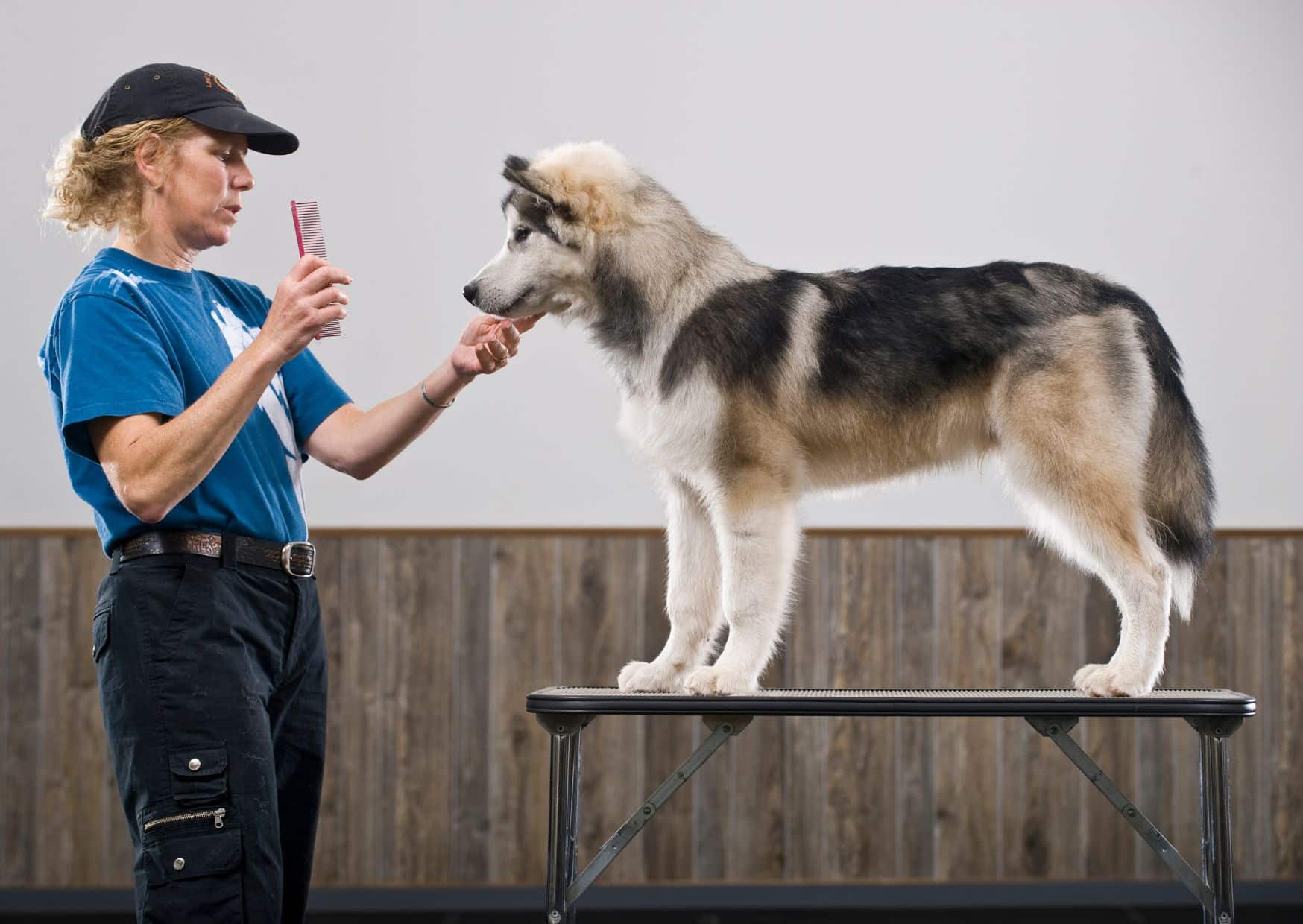
Proper grooming and coat care are essential for maintaining the health and appearance of a Malamute dog. Discussing the grooming needs, including brushing and bathing, as well as highlighting the importance of regular coat care and shedding management, helps ensure a well-maintained and generally healthy down coat.
Grooming Needs
Brushing: Alaskan Malamute dogs have a thick, double coat that requires regular brushing to prevent matting and remove loose hair. Use a slicker brush or an undercoat rake to reach the dense undercoat and remove dead hair. Brushing should be done at least once or twice a week, but during shedding seasons, daily brushing may be necessary to manage the increased hair loss.
Bathing: The Malamute dog breed has a naturally clean coat and does not require frequent baths. Bathing them every two to three months or when they are visibly dirty is generally sufficient. Use a mild dog shampoo and ensure thorough rinsing to prevent skin irritation. Overbathing can strip the coat of its natural oils, leading to dryness and skin problems.
Nail Trimming: Regular nail trimming is important to prevent overgrowth, discomfort, and potential injury. Trim the nails every few weeks or as needed, ensuring you don’t cut into the quick (the blood vessel inside the nail).
Ear Cleaning: Check and clean your Alaskan Malamute’s ears regularly to prevent wax buildup, infections, and other ear-related issues. Use a veterinarian-recommended ear cleaner and gently wipe the outer ear with a cotton ball or a soft cloth.
Importance of Regular Coat Care and Shedding Management:
Preventing Matting: Regular brushing helps prevent matting and tangling of the dense fur. Mats can be uncomfortable and even painful for the dog, and they can trap moisture and debris, leading to skin problems. Thoroughly brush through the entire coat, paying extra attention to areas prone to matting, such as behind the ears and under the armpits.
Managing Shedding: They are known to shed heavily, particularly during seasonal transitions. To manage shedding, consistent brushing is crucial to remove loose hair and reduce the amount of hair left around the house. Using a de-shedding tool or a slicker brush with fine bristles can be particularly effective in capturing loose hair.
Skin and Coat Health: Regular coat care helps maintain the health and condition of the skin and coat. Brushing stimulates blood flow to the skin, distributes natural oils, and removes dirt and debris. This promotes a healthy, shiny coat and minimizes the risk of skin issues.
Bonding and Comfort: Grooming sessions provide an opportunity for bonding between you and your Alaskan Malamute dog breeds. It allows you to establish trust, perform necessary health checks, and ensure your dog is comfortable with being handled. Make grooming a positive experience by offering treats, praise, and a calm environment.
Interesting Facts about Alaskan Malamute
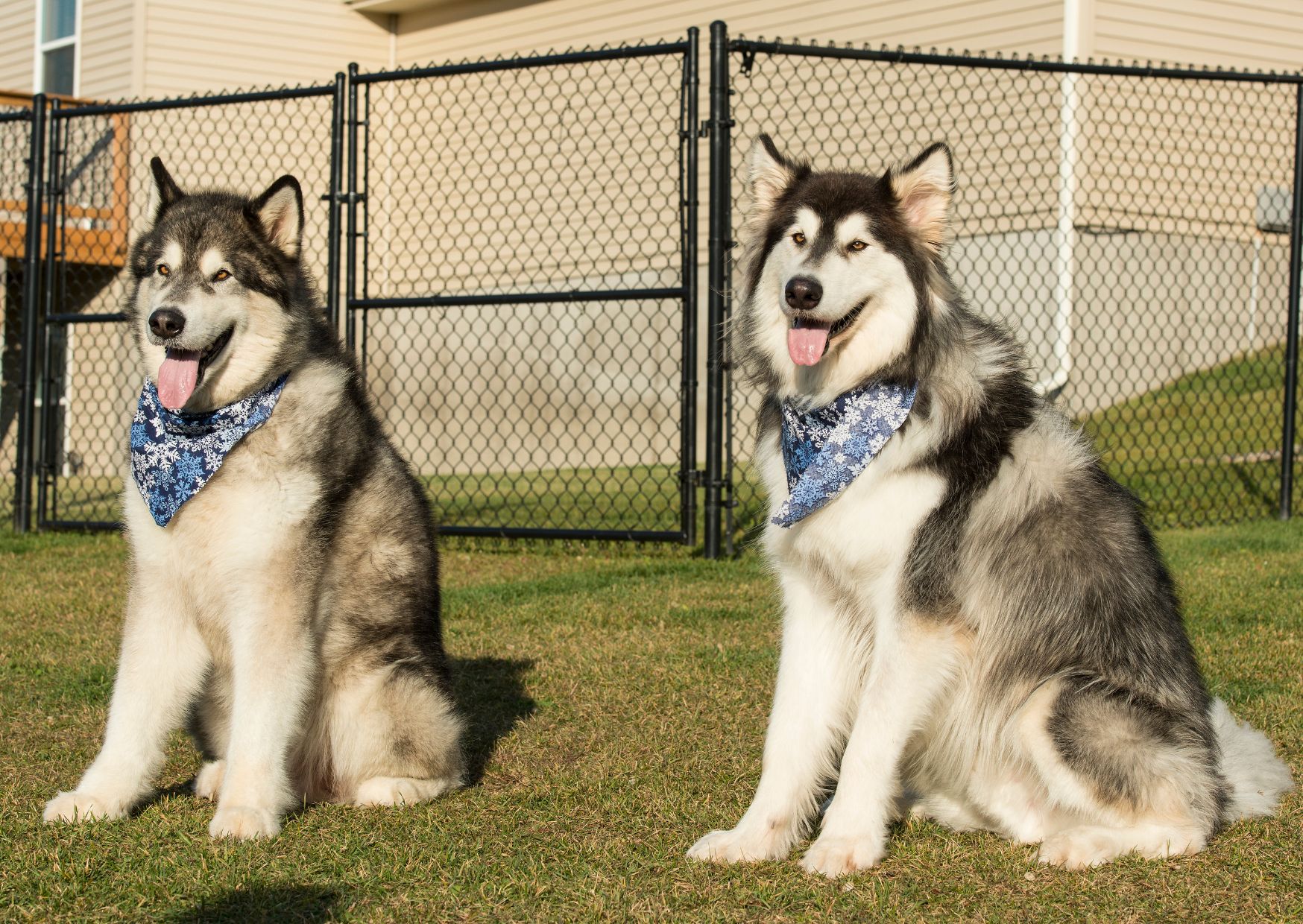
Impressive Strength and Endurance: One of the most fascinating aspects of owning an Alaskan Malamute dog breed is witnessing their incredible strength and endurance. These dogs have been bred for centuries to pull heavy sleds across long distances in Arctic conditions. It’s truly awe-inspiring to see them in action, effortlessly against large dogs and navigating through snow and rough terrain.
Built for Cold Weather: Alaskan Malamute dogs are perfectly suited for cold climates. Their thick double coat, consisting of a warm undercoat and a coarse outer layer, provides insulation and protection from freezing temperatures. It’s remarkable to witness how they can withstand extreme cold and even enjoy playing in the snow.
Gentle Giants: Despite their size and strength, they have a gentle and friendly nature. They are known for their affectionate demeanor and often form strong bonds with their human family members. It’s heartwarming to experience their loving and loyal nature, making them excellent family companions.
Excellent with Children: If you have kids, you’ll be delighted to know that Alaskan Malamute dogs are generally great with children. They have a patient and tolerant disposition, and with proper socialization and training, they can become gentle playmates and protectors for the little ones.
Vocal and Expressive: They are quite vocal and expressive. They have a wide range of vocalizations, including howls, barks, and “talking.” It’s both amusing and endearing to see them communicate with us in their unique way. Their vocal nature adds a special charm to their personality.
Thriving in Pack Environments: They have a strong pack instinct, which stems from their history of working closely with both other animals and their human companions. They enjoy being part of a family unit and thrive in environments where they have consistent social interaction and companionship.
Intelligent and Independent Thinkers: Alaskan Malamutes are known for their intelligence and independent thinking. While this makes them highly trainable, it also means they may occasionally display a stubborn streak. Patience, positive reinforcement, and consistent training methods are essential to bring out the best in their intelligent minds.
Outdoor Enthusiasts: This breed has a natural love for the outdoors. They enjoy activities like hiking, running, and exploring nature. Engaging in outdoor adventures with your Alaskan Malamute club not only provides physical exercise but also strengthens the bond between you and your furry companion.
Bonded to the Pack: Alaskan Malamute is deeply bonded to their human family members. They thrive on attention, love, and companionship. Being part of their pack is essential for their happiness and well-being. It’s a joy to witness the strong bond that develops between a Malamute dog and their owner.
Historical Significance: Owning an Alaskan Malamute also means being part of a breed with a rich historical significance. These dogs played a vital role in the survival and sustenance of the native Alaskan tribes. Their remarkable contributions as sled-pullers and working dogs in extreme conditions continue to be celebrated and admired.
Conclusion
The Alaskan Malamute dog breed is an enchanting breed, admired for its strength, endurance, friendly nature, and rich history. With their striking appearance, they have played a vital role in sled pulling and transportation, both historically and in modern times. Their gentle temperament, intelligence, and expressive vocalizations make them excellent family companions. Proper care, training, and socialization are crucial for their well-being. The Alaskan Malamute’s unique charm and remarkable qualities continue to make them a beloved breed worldwide.
FAQs
Are Alaskan Malamutes good family pets?
Yes, Malamutes can make excellent family pets. They are known for their friendly and affectionate nature, making them great companions for families, especially those with children. However, it’s important to provide them with proper training and socialization.
Do Alaskan Malamutes require a lot of exercise?
Yes, Alaskan Malamutes have high energy levels and require regular exercise to stay happy and healthy. Daily walks, active playtime, and engaging in activities that challenge them physically and mentally are essential.
Are Alaskan Malamutes suitable for first-time dog owners?
Alaskan Malamute dogs can be a good fit for first-time dog owners, as long as they are willing to invest time and effort into training and socialization. It’s important to understand their needs and provide them with the proper environment and exercise they require.
Do Alaskan Malamutes get along with other pets?
Alaskan Malamute dogs have a strong prey drive and may not get along well with small dogs or smaller pets, including cats, unless raised together from a young age. Proper socialization and supervision are important when introducing them to other pets.
How long do Alaskan Malamutes typically live?
On average, Alaskan Malamutes have a lifespan of around 10 to 14 years. However, with proper care, including a balanced diet, regular exercise, and routine veterinary check-ups, some individuals have been known to live longer.
Sharing is Caring!
About The Author
PawCool Team
Related Categories: Dogs | Dog Breeds
Latest Articles

Never Miss A Thing!
All pet stories & guides you care about








